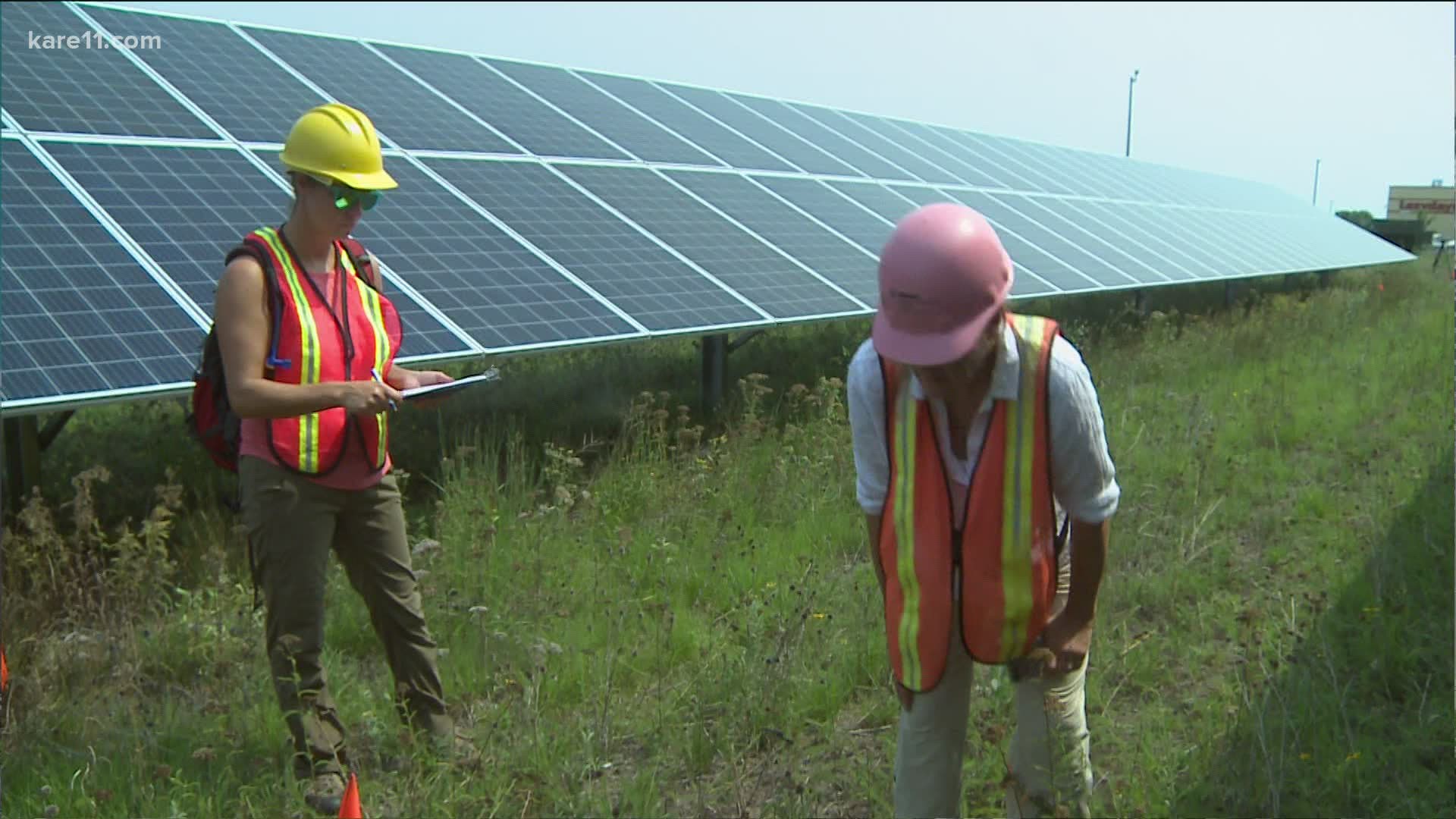RAMSEY, Minn. — You've probably noticed more solar fields popping up these days, but did you ever wonder what's growing underneath them, or what's crawling underneath them?
Rob Davis with Connexus Energy says a research team is working to answer those very same questions.
"They are measuring the abundance of beneficial insects underneath solar panels,” Davis says.
The project is part of a 3-year study that is being conducted by the University of Minnesota, the Argonne National Lab and the Monarch Joint Venture.
The overall goal of the study is to find the best uses for the land that is located underneath solar panels in solar farms.
With solar farms becoming a more popular source of clean electricity, Davis says there is a growing interest in finding secondary uses for that land.
“We really want to maximize the purpose of this land and this space. It’s about being good stewards of the land and providing the greatest benefit to the environment and the community,” Davis says.
More than two dozen solar farms across the country are involved in this study.
One of those solar farms is located in Ramsey, Minnesota.
At this solar farm, the land underneath the panels is occupied by native plants and wildflowers that were selected for the sole purpose of attracting pollinators like bees and butterflies.
“This is a great situation with the solar farm located right next to this crop land where they grow things like squash and watermelon that could stand to benefit from the pollination,” Davis says.
On Tuesday, a team of researchers visited this site to count how many pollinators are actively using this land.
The team has set up several sections at the property that they have roped off with flags.
Each section will be visited four times this summer, and at each section, researchers will spend seven minutes counting the number of bugs that they find.
This number, along with a detailed list of the types of bugs that they found, are all logged in a computer.
This data is then compared to other solar farms across the country to see which sites are attracting the most pollinators.
Davis says this data will help them decide which plants pollinators like the most and which solar farms attract the most pollinators.
"We may find that some solar farms should be used for other purposes. It might be that some should be grazed by sheep. It might be that some could be grazed by cattle, or actually could have some crops growing under the shade of the panels,” Davis says.
The overall goal of the study is to make sure no acre, no square foot of space goes to waste.
So that every solar field that's built in the coming years can serve a second purpose with the land underneath every panel.

